Gator Holes and More: Alligator Tracks and Sign II
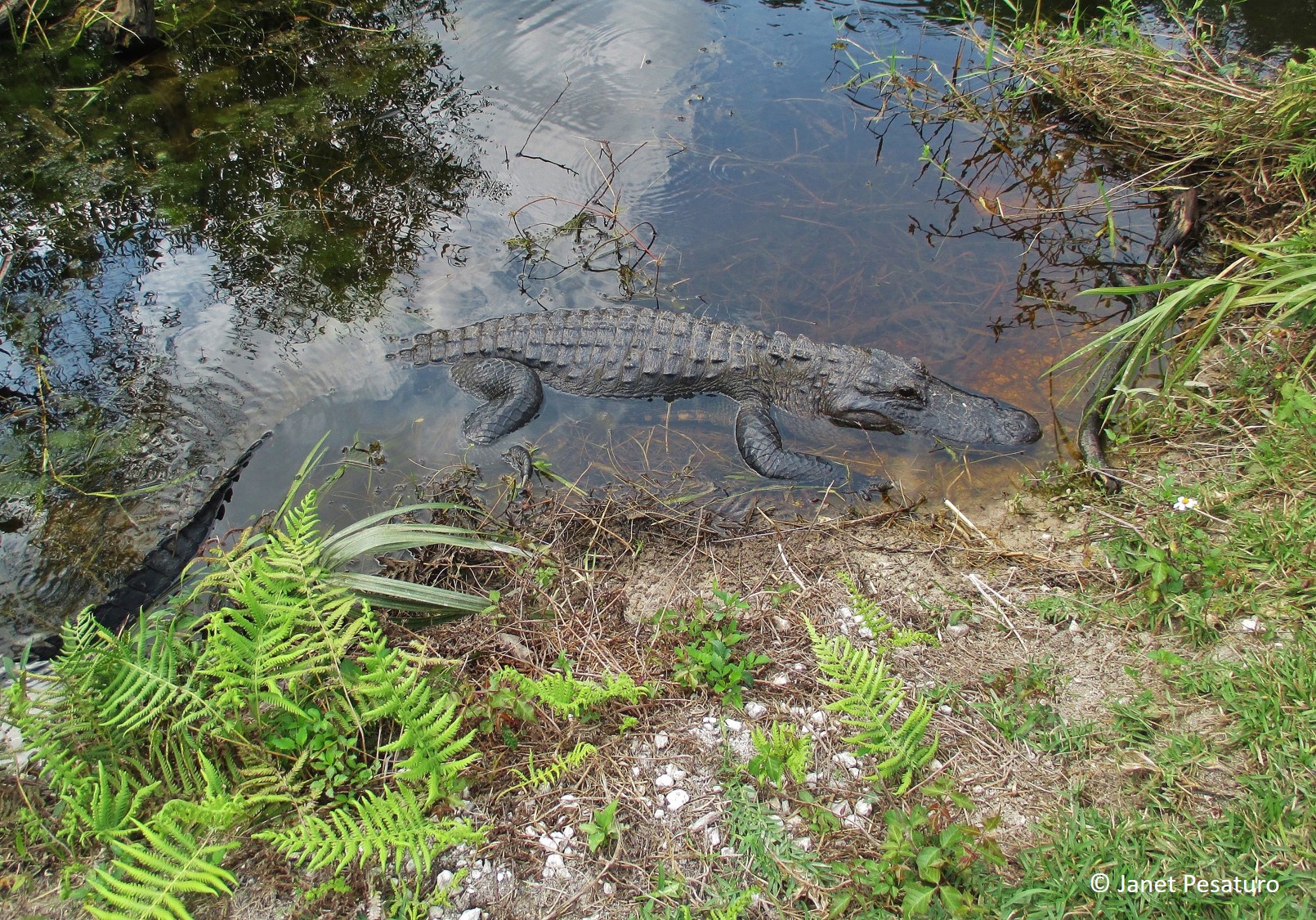
As large, common reptiles, alligators create abundant and rather obvious sign where they range in the southeastern US. So the challenge is in recognizing their spoor rather than in finding it. In this post, a sequel to Alligator Tracks and Sign I (which covers tracks, scat, and basking spots), I’ll discuss trails, runs, haul outs, burrows, “gator holes” and nests. The latter two are what make Alligator mississippiensis a keystone species, for they are critical resources for many other species.
Like Alligator Tracks and Sign I, this post is an extension of the material on tracks and sign in the alligator chapter of my book, which covers more on alligator habits relevant to camera trapping.
Trails and Runs
Alligators generally use an understep walk. The stride is 18 – 28+ inches and the straddle is 11 – 24+ inches (Tkaczyk, 2015). An understep walk makes sense given the species’ short legs, long body and rather inflexible back (as compared to the short-legged, long-bodied weasels, whose flexible backs allow them to bound). Sometimes you can clearly see separate, well-defined front and hind feet, but often each front-hind pair appears as a single elongated messy, muddy print. Typically alligators walk with legs extended so that the belly does not drag, but the long tail does.
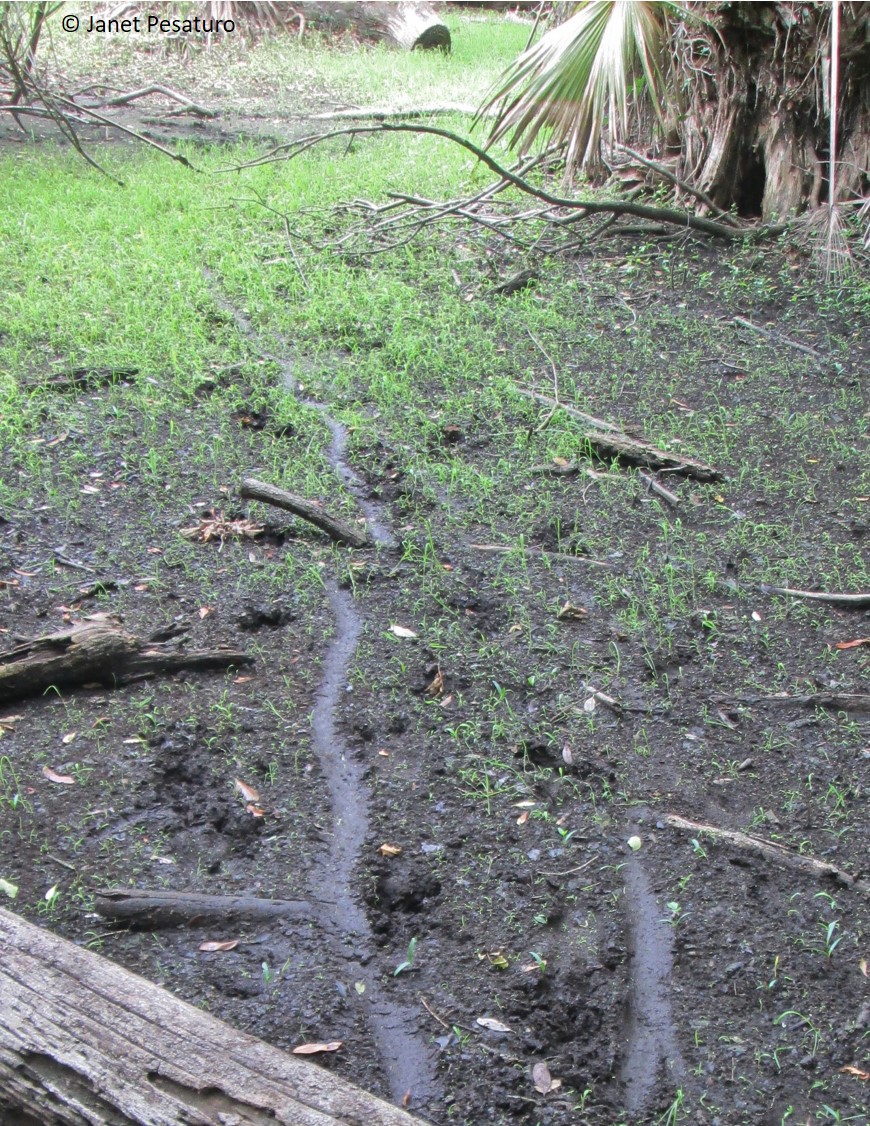
In the video below (taken by “mbpelicans”), you can clearly see the animal moving in an understep walk with the belly raised but the tail dragging.
Alligators do create runs between their favorite resources. Frequent use makes the runs appear well trampled with few, if any, clear tracks.
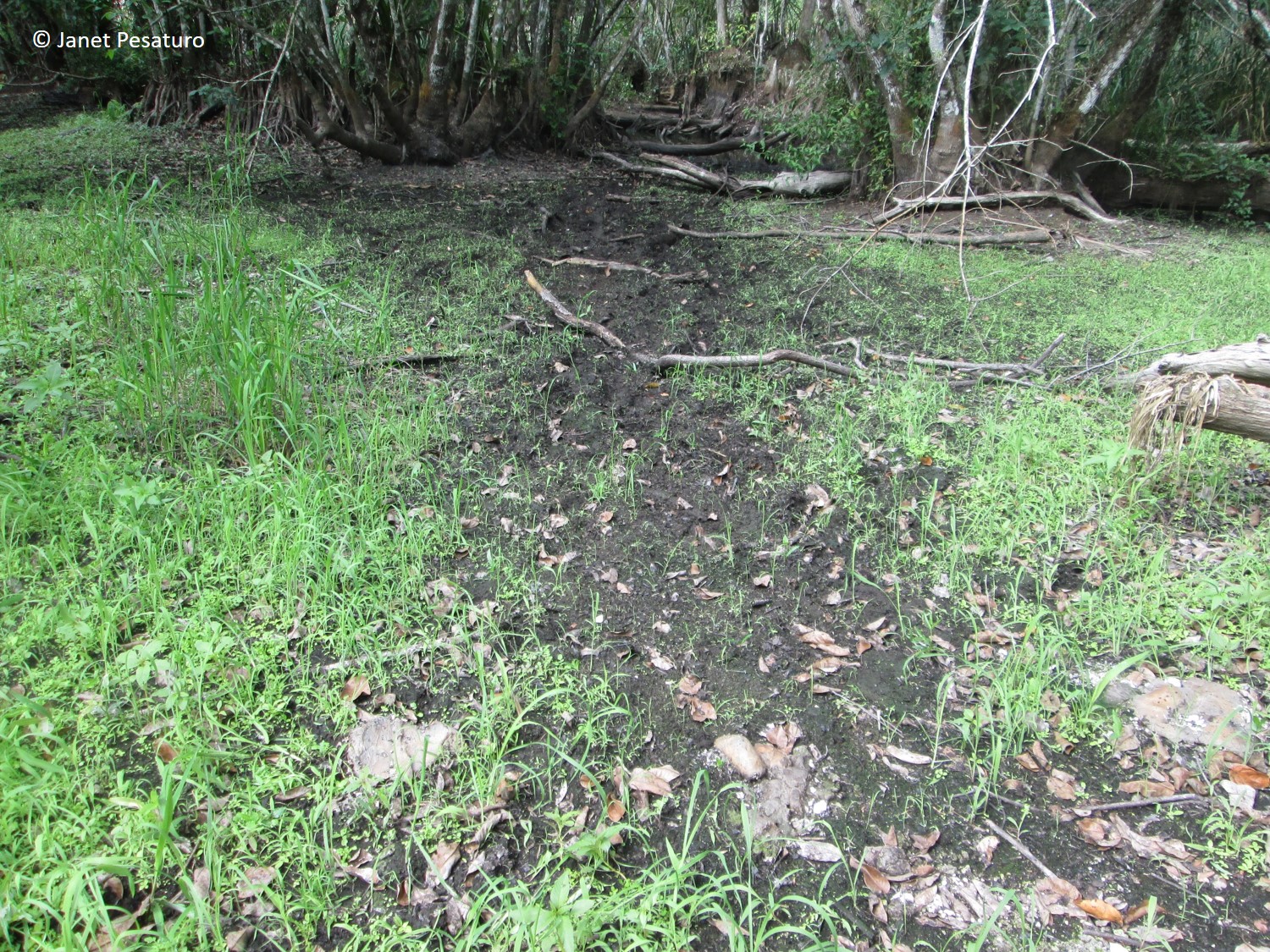
Alligators tend to walk right over logs, so when a log crosses a run, there may be evidence of scratch marks left by the claws as the animal traveled over the log.
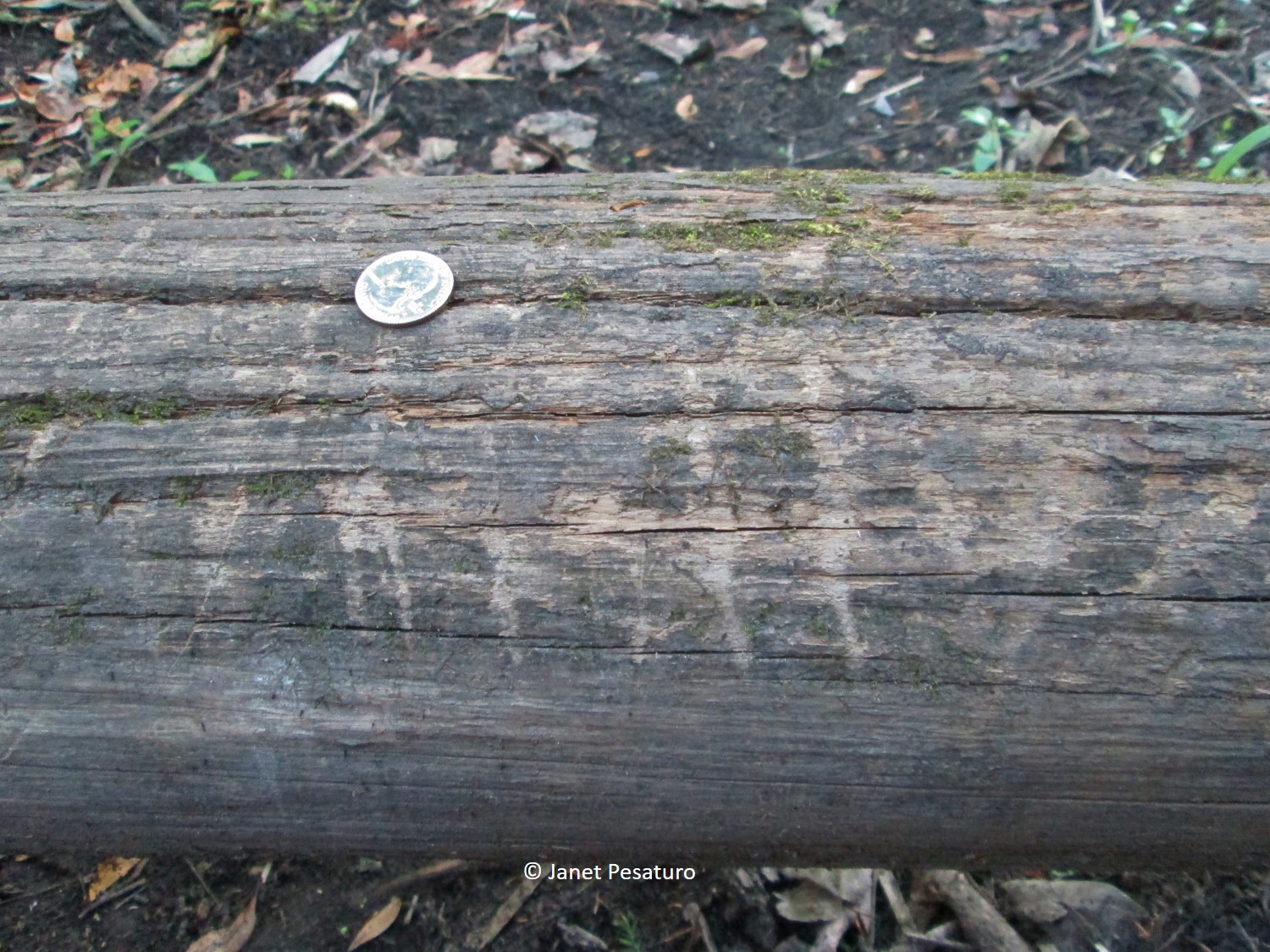
Haul Outs
Alligators tend to repeatedly enter and exit the water at certain spots where, in favorable substrate, you may notice multiple tail drags and tracks at the water’s edge. You may even see belly drags, also called slides, because sometimes alligators slide on their bellies for a few steps before entering the water. Sometimes a haul out is also a basking spot. If it is, alligator droppings will litter the area. The photo at the top of this post shows an alligator about to haul out of the water at a spot that is also used for sunbathing, as evidenced by an accumulation of crumbly white scats near the pond edge. The haul out in the photo below, however, does not appear to be used for basking.
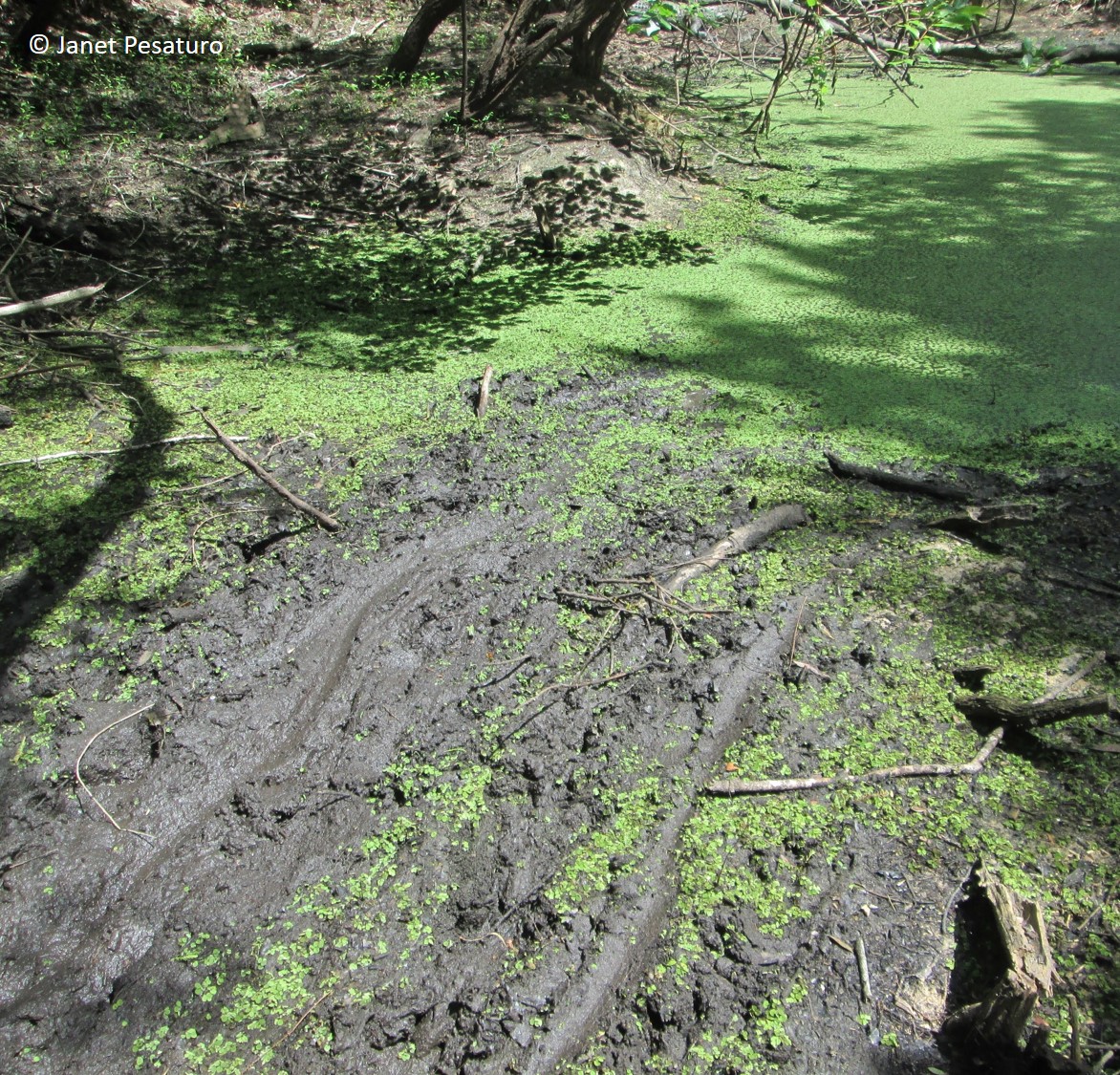
Burrows
During cold weather, alligators shelter in bank burrows. An individual may excavate its own burrow or use an existing hole. When it excavates its own, the entry hole may be just large enough for the animal. When it uses an existing burrow, it may choose one much larger than necessary as seen here. The photo below shows an existing hole used by an alligator in the Fakahatchee Strand Preserve in Florida. I believe the hole was a culvert or some other remnant of human activity, created during the limestone quarrying era in that region.
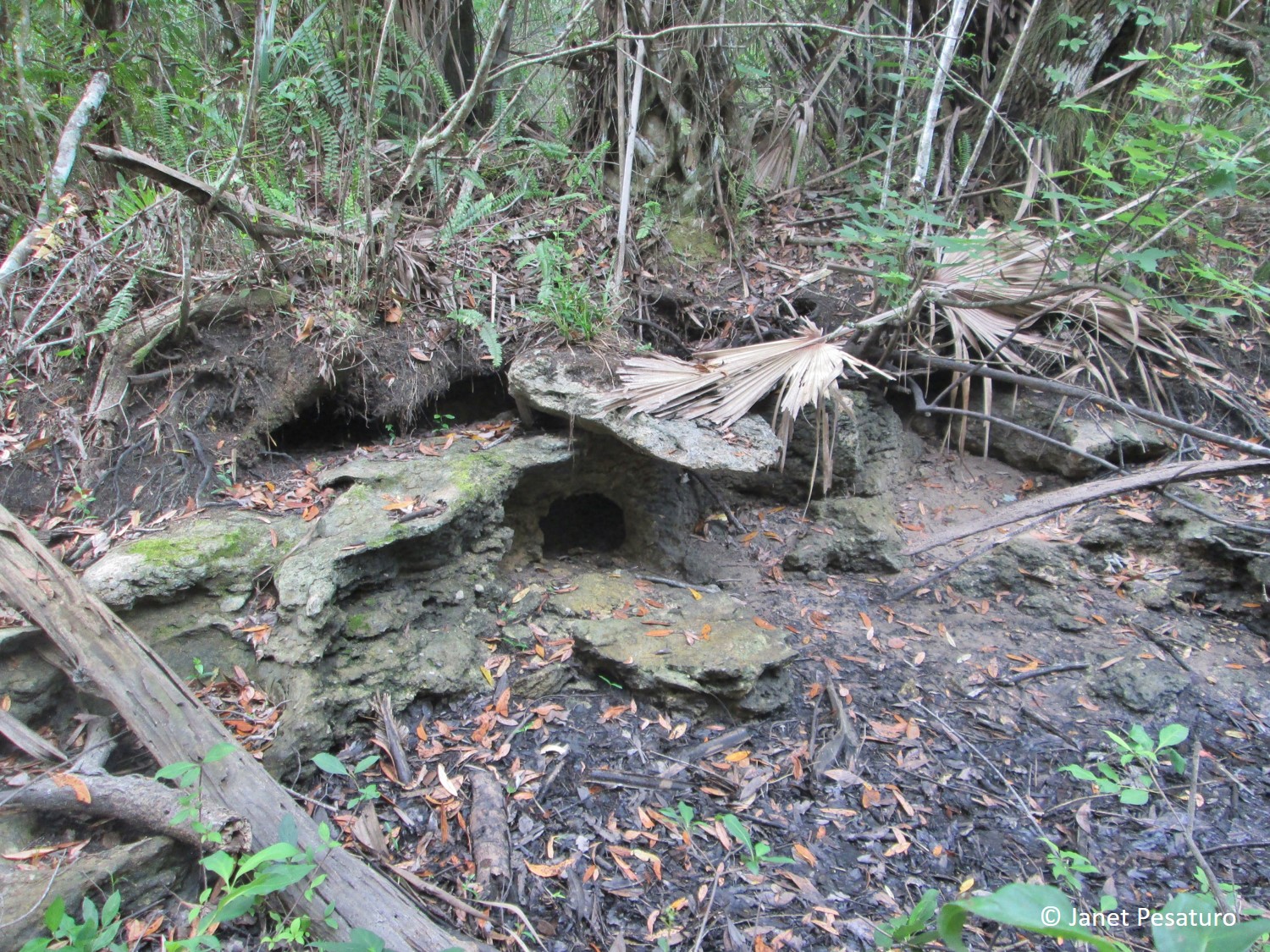
Gator Holes
“Gator holes” are interesting and ecologically valuable creations. As water levels drop, alligators maintain depth by clearing muck from the bottom of the pond. During the dry season, these water holes are vital not only for the alligator itself, but for a variety of fish, turtles, snakes, birds, and mammals. Gator holes, especially, make alligators a keystone species.
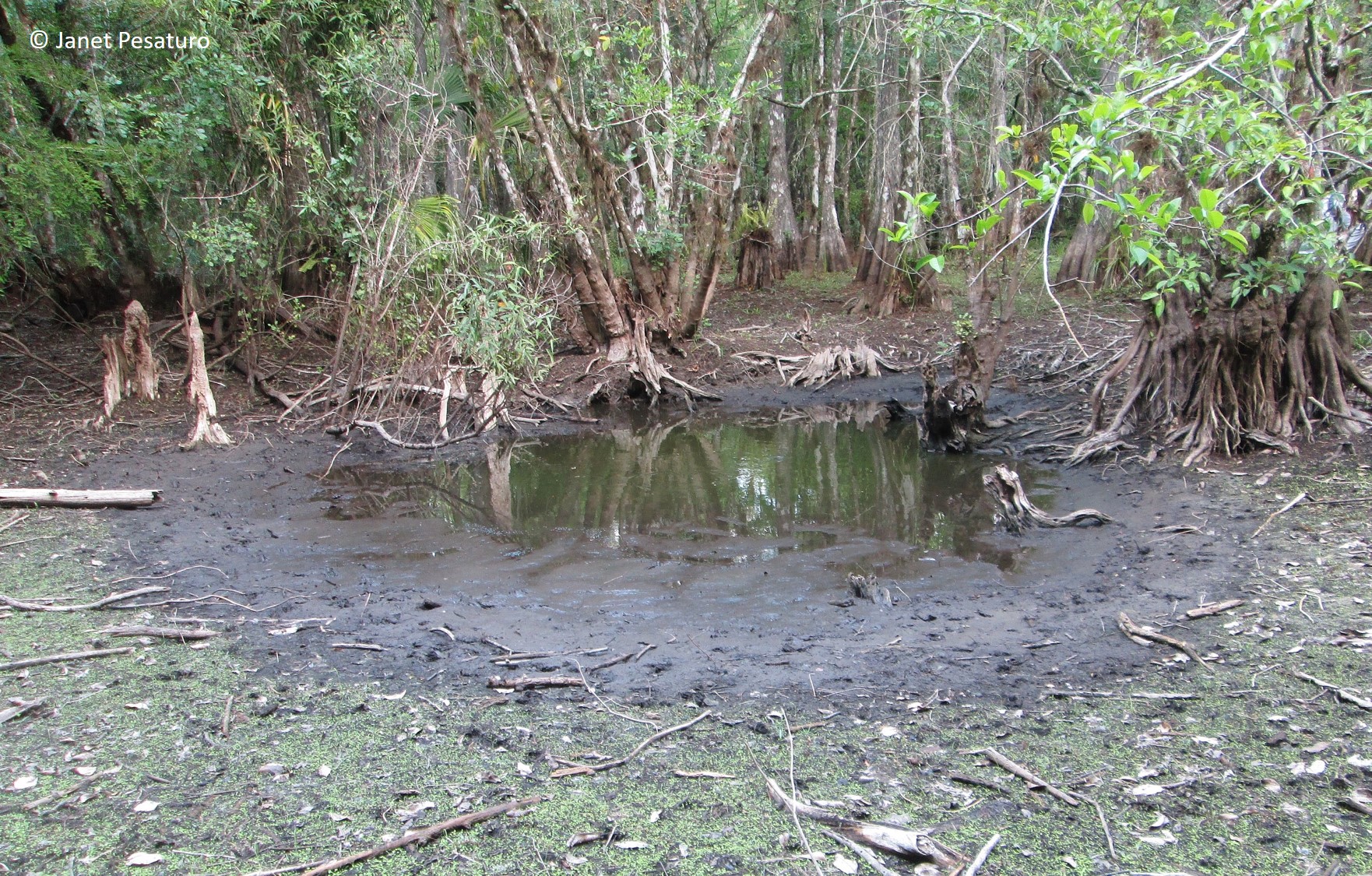
As the dry season progresses, gator holes may shrink to small puddles or even completely dry up.
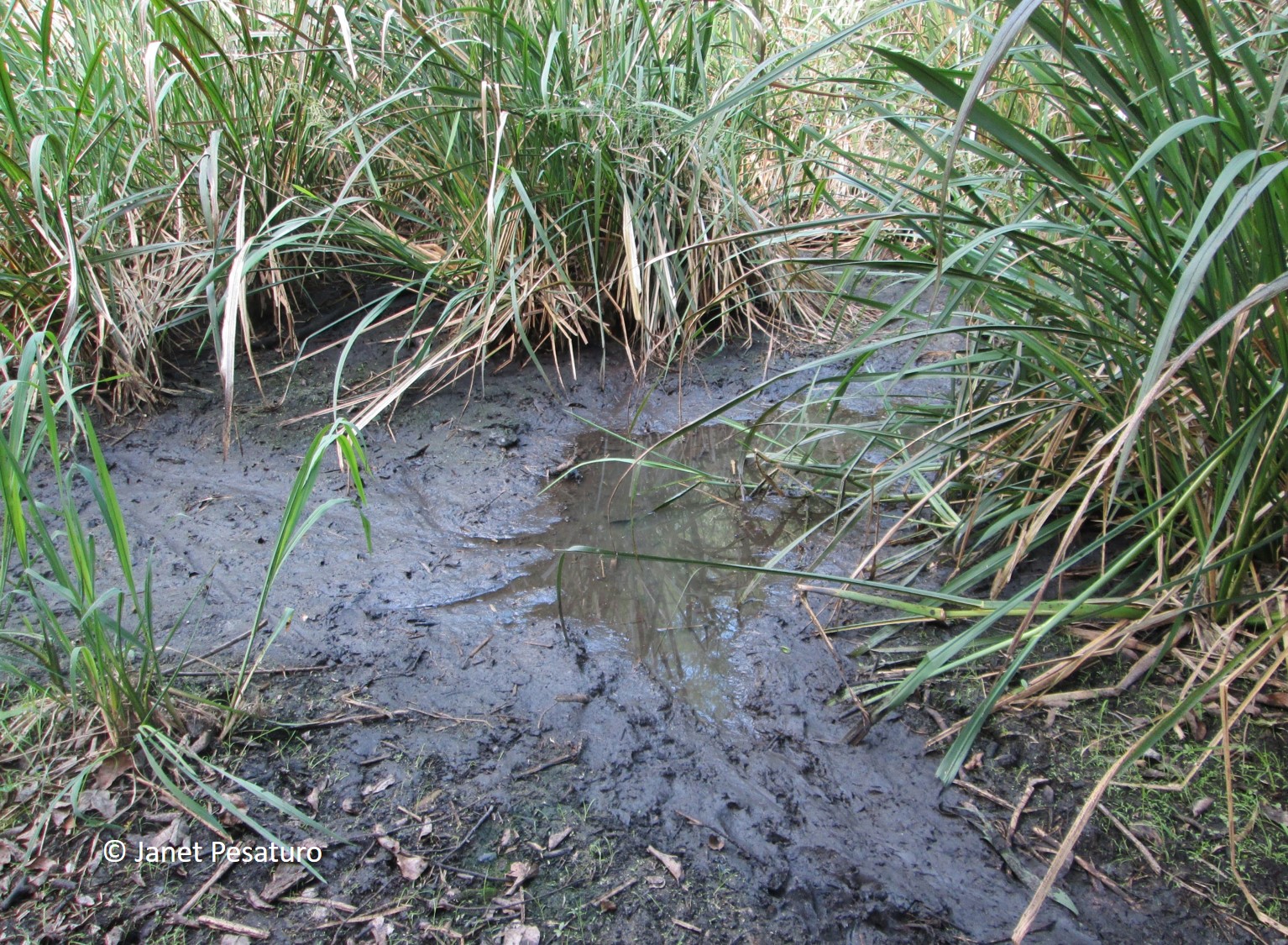
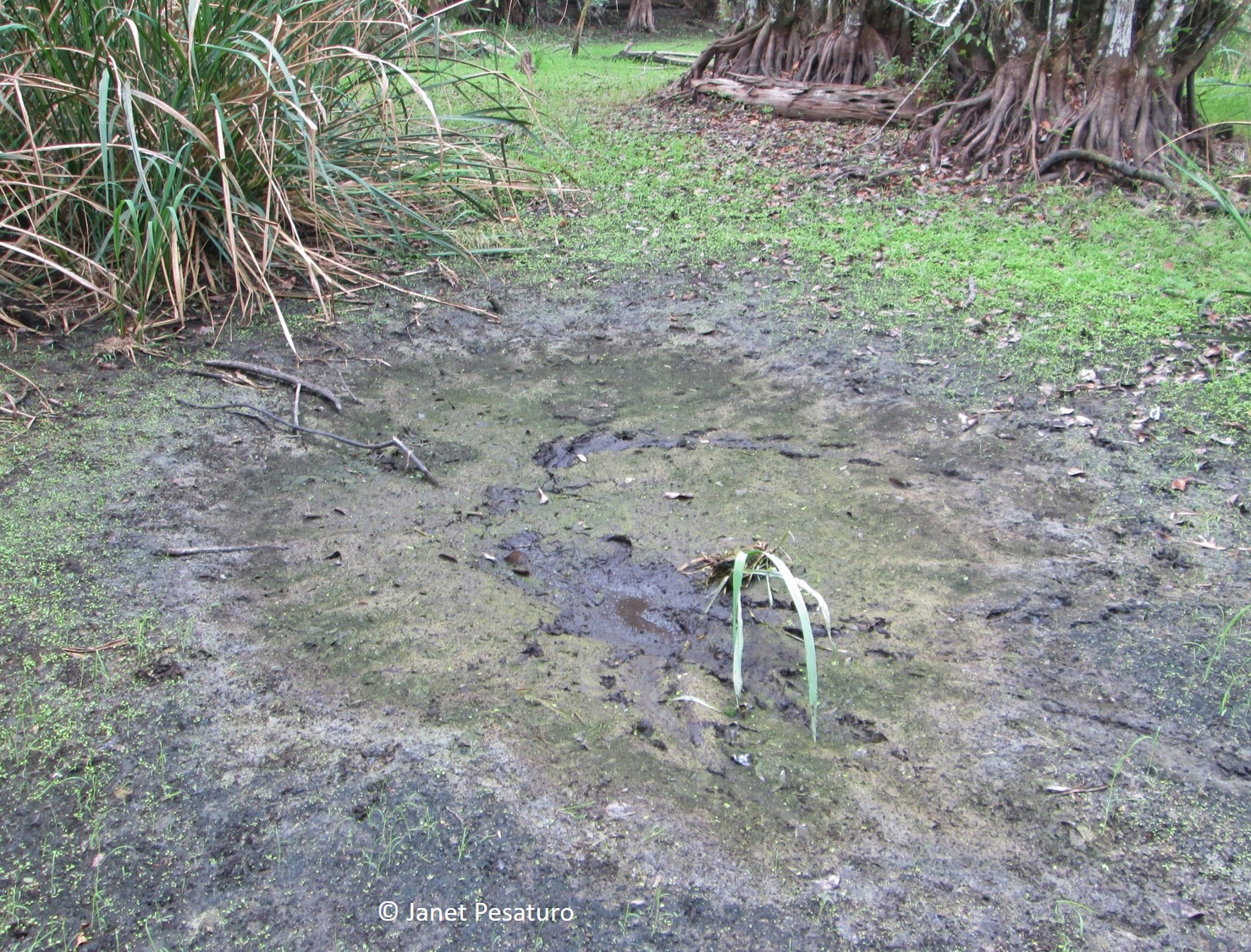
Nests
After mating, a female alligator constructs a mound of mud and whatever vegetative debris she can find: leaves, grasses, sticks etc., where she will lay her eggs. The nest is typically 5-10 feet in diameter by 2-3 feet high and located in a sheltered spot near the water. I was never able to get close enough to one for a good photo, but look carefully at the image below for a mound of debris at the far left behind the pond. I believe that is an alligator nest. At the far right behind the pond, you can see an alligator basking.
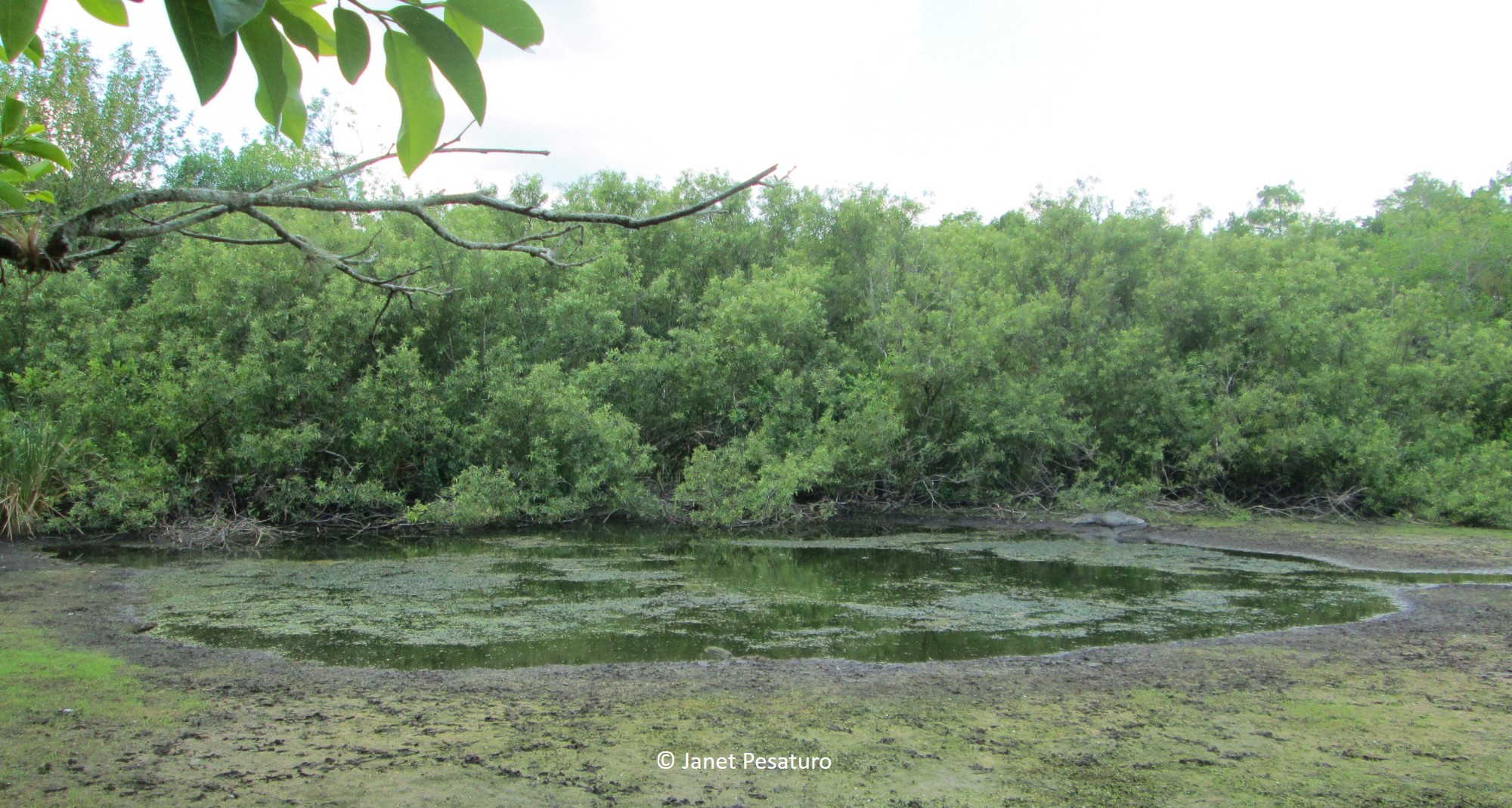
Alligator nests are also critical for other species: Some species of turtle and snake use them for nesting.
Sources
Tkaczyk, F. Tracks and Sign of Amphibians and Reptiles: A Guide to North American Species. Mechanicsburg, PA: Stackpole Books, 2015.

I love, love your postings. Your knowledge is inspiring. Thank you so much for sharing your knowledge, insight and all the photos. You are one of my heroes!
Thank you so much for the kind words! It’s great to know that you find my posts enjoyable!
Thank you for the help. Great pictures. Now I know what I’m looking at.
My pleasure. I’m glad you found it useful.
I live on the River with a pond on the other side of my property. We didn’t know we had gators until one night we spotlighted the pond and saw a lot of red eyes. The next day we saw 3, 4 foot gators and a 8 foot gator in the very back of our pond. Then we found a trail we’re they go and fourth from the river to pond. We keep our distance but I love to see them.
Wow, that is amazing!
Found tracks a crossed our sandy driveway this morning. They were wide enough to be gator tail tracks but no side prints for feet. Could that still be a couple of gators or really big snakes? We do live in really wooded area, Florida. Never have we seen these kind of tracks before. We do have chickens and we don’t want to put them in danger or ourselves. Thank you.
It’s impossible to say without seeing it. It sounds like you saw long, wide drag marks so it probably wasn’t a snake, but it’s not necessarily a gator. Even if it wasn’t a gator, it’s important to keep your chickens safe anyway because they are easy prey for many predators.
Does this photo look familiar at all it’s at the pond and I just don’t think I know what it really is but I was thinking maybe a gator.
Sorry it won’t load photo
Hi Fred, unfortunately you cannot upload photos in comments. But do feel free to send by email, which you can find under “Home” and then “Contact”.
That is very Large snakes .Also ,yes could be a gator track hard to say no feet .So,I’m leaning on the snake theory.
I have a gator in the pond behind my home. It’s sticking it’s snout in the soul along the shore and seems to be burrowing. It’s young and the weather is getting warmer. What’s up with this?
Sounds like it is digging a burrow, which they use to escape cold weather, but sometimes also to escape hot or dry weather.
I am buying a house where the a nest of alligators are at the end of the property. I am very scared of gators. Would this be to close for confort or should I have them removed?
That’s not for me to say. It depends on your tolerance and the legality of removing them in your state. You might want to talk to someone in your state’s fish and wildlife department. Good luck.